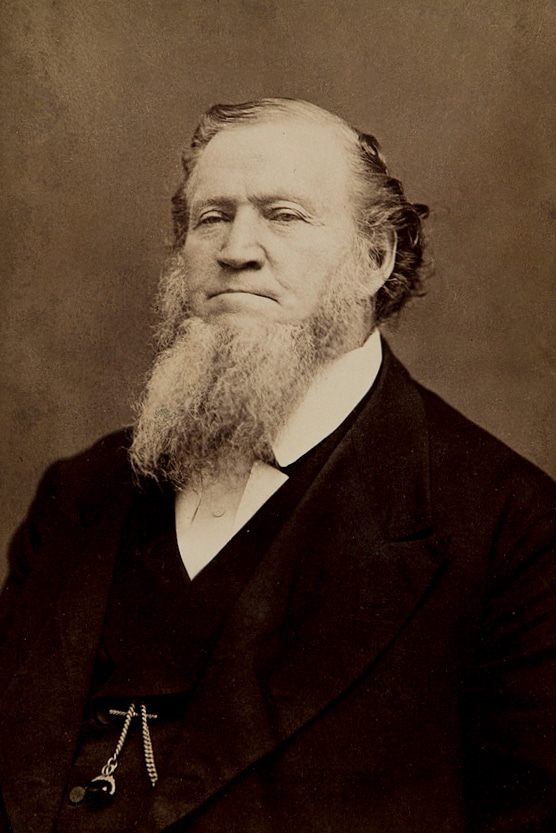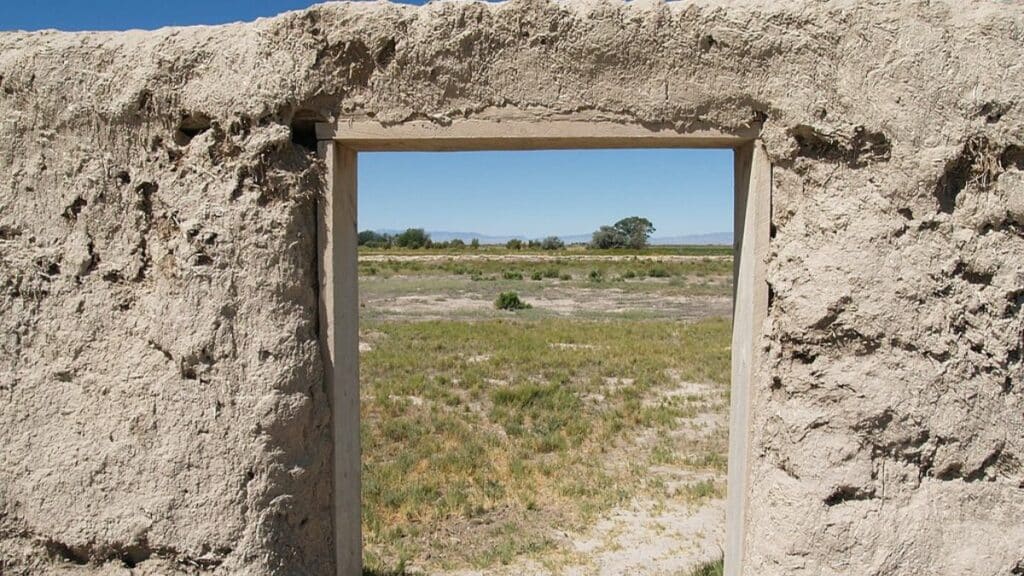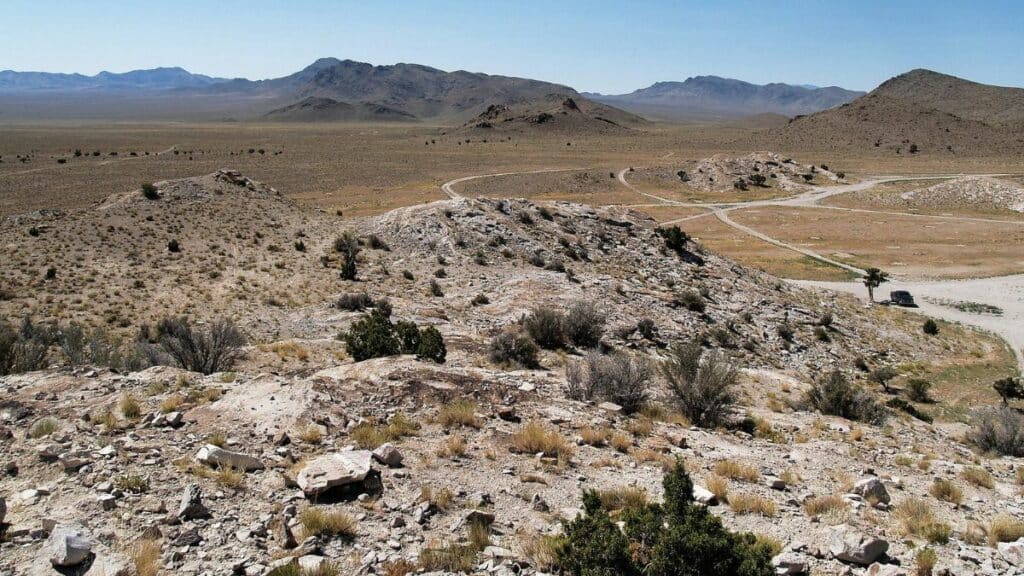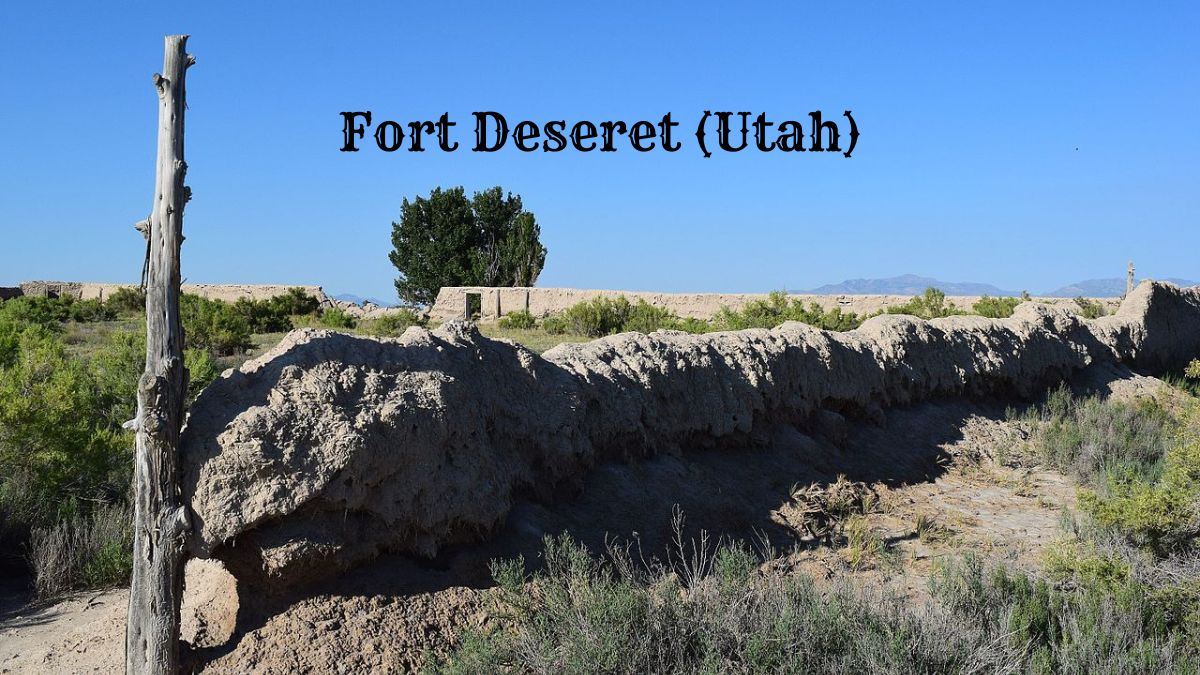Fort Deseret, located in Millard County, Utah, is a historic fort built in the mid-19th century.
The fort was constructed by Mormon pioneers in 1865 as a way to protect themselves from potential attacks by Native Americans.
The fort was strategically built on a hill overlooking the surrounding area, which allowed the pioneers to monitor potential threats.
Fort Deseret is listed on the National Register of Historic Places and is a popular destination for history enthusiasts and tourists. The fort has been well-preserved over the years, with many of its original structures still standing.
Visitors can explore the fort’s barracks, storehouse, and watchtower, among other buildings, and learn about the fort’s history and significance.
History of Fort Deseret (Utah)
Black Hawk War
Fort Deseret, located in Millard County, Utah, was constructed in 1866 during the Black Hawk War. The war was between the United States Army and the Pahvant Indians, led by Chief Black Hawk.
The Pahvant Indians, who had been living in the area for centuries, were forced to leave their land due to the arrival of Mormon pioneers.
Mormon Settlers and the Church of Jesus Christ of Latter-day Saints

The Mormon pioneers, led by Brigham Young, arrived in the Salt Lake Valley in 1847 and settled in the surrounding areas.
The Church of Jesus Christ of Latter-day Saints played a significant role in Utah’s settlement and the establishment of Fort Deseret.
The fort was built to protect the settlers from Indian attacks and to serve as a base for local volunteers and the U.S. Army.
Construction and Builders
John W. Radford, a local builder and contractor, oversaw the construction of Fort Deseret. The fort was built using adobe bricks and was designed as a defensive structure.
The fort had walls 12 feet high and 2 feet thick and a perimeter of 200 feet. It was equipped with a guard tower, a corral, and a well.
Despite its defensive design, Fort Deseret was never attacked by Indians. The fort was used as a military outpost until 1869 when it was abandoned. Today, the fort is a historical landmark open to the public for tours.
Fort Deseret’s Structure

Fort Deseret was constructed during the mid-19th century by early settlers in the Utah territory.
The fort was built using adobe, straw, mud, and stone and was designed to protect settlers and their livestock against attacks from Native American tribes.
Adobe Walls and Bastions
The main walls of Fort Deseret were constructed using adobe bricks, which were made by combining mud, straw, and water. The walls were then reinforced with wooden beams and covered with plaster to protect against erosion.
The fort also featured bastions at each corner, providing additional protection and a clear view of the surrounding area.
Straw and Mud Construction
The fort’s buildings’ roofs were constructed using a combination of straw and mud, which provided insulation and protection from the elements.
The floors were made from compacted earth, covered with a layer of straw, and then finished with a layer of mud.
The Great Stone Face and Lava Rock Foundation
The fort’s main entrance featured a large stone face carved from a nearby cliff, which served as a symbol of strength and protection.
The fort’s foundation was constructed using lava rocks, which were abundant in the surrounding area and provided a stable base.
Geography Surrounding Fort Deseret

Delta and Millard County
Fort Deseret is located in Millard County, Utah, near Delta. Delta is situated in a region that is known for its vast agricultural lands and is often referred to as the “Topaz Triangle.”
The town of Delta is the largest in Millard County, and it serves as the county seat.
The area surrounding Fort Deseret is characterized by vast stretches of arid land, with the Great Salt Lake Desert to the north and the Sevier Desert to the south.
Proximity to Highways and Way Stations
Fort Deseret is located at milepost 64.7 near the US-50 and Utah Highway 257 intersection, which puts it close to several important transportation routes.
US-50 is a major east-west highway that runs from California to Maryland, and Utah Highway 257 provides access to the town of Delta and the surrounding agricultural areas.
The fort was originally established as a way station for travelers on the Overland Trail, a major transportation route during the mid-19th century.
It was strategically located near a natural spring that provided water for travelers and their animals.
Today, the fort serves as a reminder of the important role that transportation and communication played in the settlement of the American West.
Explore More: 10 Historic Forts in Utah: A Journey Through Time
Cultural and Heritage Preservation
State Park Designation
Fort Deseret is a State Park that was designated as such in 1977. This designation recognizes the fort’s historical significance and its importance to the local community and the state of Utah as a whole.
The park allows visitors to explore the fort and learn about its history through guided tours and exhibits.
Monuments and Decor
The fort is decorated with various monuments and plaques commemorating its history and the people who built it.
These include a plaque honoring the fort’s builders, a monument commemorating the Mormon pioneers who settled in the area, and a plaque honoring the Native Americans who lived in the region before the pioneers arrived.
These monuments and plaques serve as a reminder of the fort’s rich history and the people who contributed to its development.
Descendants and Community Involvement
The descendants of the original builders of Fort Deseret are actively involved in its preservation and maintenance.
They have formed a community organization to ensure that the fort remains in good condition and its history is preserved for future generations.
The organization also hosts events and activities that promote awareness of the fort’s history and its importance to the local community.
In addition to the involvement of the descendants, the local community is also actively involved in preserving the fort.
Volunteers from the community regularly assist with maintenance and restoration efforts, and local schools often bring students to the fort to learn about its history.
This community involvement is a testament to the importance of Fort Deseret to the local community and the state of Utah.
Current Use and Amenities
Parking and Accessibility
Fort Deseret offers ample parking space for visitors. The parking area is conveniently located near the entrance, making it easy for visitors to access the fort.
The parking area is well-maintained and can accommodate many vehicles, including RVs and buses. It is also wheelchair accessible, ensuring that even visitors with mobility issues can easily access the fort.
Picnic Areas and Family Activities
Fort Deseret has several picnic areas where visitors can enjoy a meal or snack while enjoying the scenic views.
The picnic areas are equipped with picnic tables and benches, providing visitors a comfortable place to sit and relax. They are also equipped with trash cans, ensuring that the area remains clean and free of litter.
Guided Tours and Gift Shop
In addition to the picnic areas, Fort Deseret also offers several family-friendly activities.
Visitors can take a guided tour of the fort and learn about its history and significance. The fort also has a gift shop where they can purchase souvenirs and other items.
The fort also hosts several events throughout the year, including reenactments and other historical events.
Exploration and Discovery
Fort Deseret is a fascinating historical site that allows visitors to explore the rich tapestry of the American West.
Established in 1866 by Mormon pioneers as a way station on the Overland Trail, it played an important role in the settlement of the region.
Today, visitors can explore the fort and learn about its history through various educational opportunities and tours.
Visiting Fort Deseret
Visitors to Fort Deseret can explore the site’s many buildings and artifacts, which offer a glimpse into the daily life of the pioneers who lived and worked there.
The fort’s main building, which served as a combination store, post office, and hotel, has been restored to its original condition and is open to the public.
Visitors can also explore the fort’s blacksmith shop, granary, and other outbuildings, which offer insights into life’s challenges on the frontier.
Educational Opportunities and Tours
In addition to self-guided tours, Fort Deseret offers a variety of educational opportunities for visitors of all ages.
The fort’s staff and volunteers are knowledgeable about the site’s history. Upon request, they can provide guided tours and educational programs.
Visitors can also attend lectures and demonstrations on pioneer cooking, blacksmithing, and other frontier skills.
Fort Deseret is an excellent destination for anyone interested in exploring the history of the American West.
Its rich history and educational opportunities make it a must-visit site for anyone interested in the region’s settlement.

Cory is a website owner and content creator who enjoys fishing, history, coin collecting, and sports, among other hobbies. He is a husband and father of four.
Romans 15:4 For whatever was written in former days was written for our instruction, that through endurance and through the encouragement of the Scriptures we might have hope.

